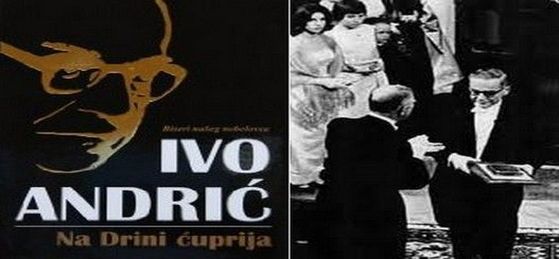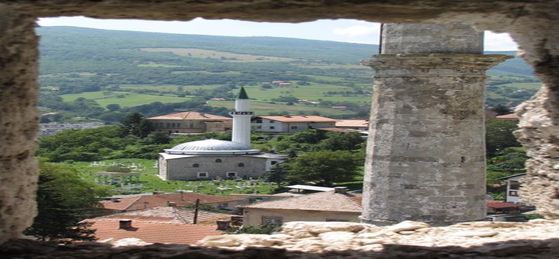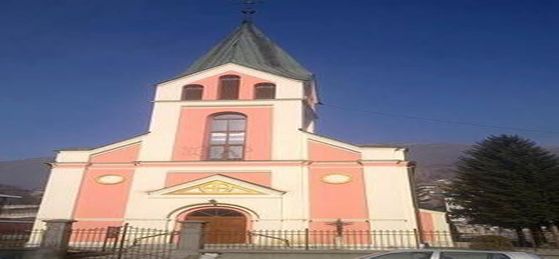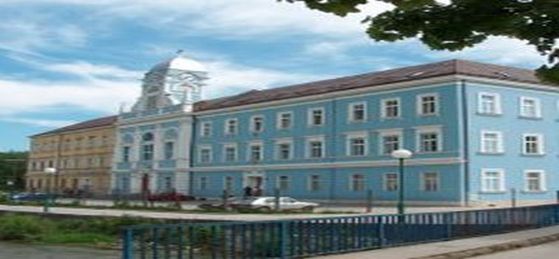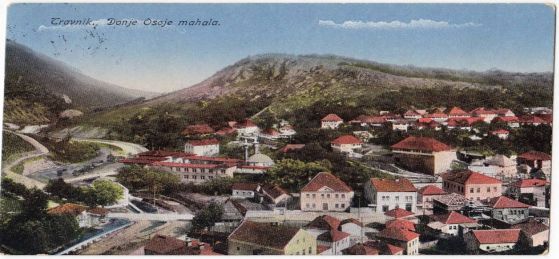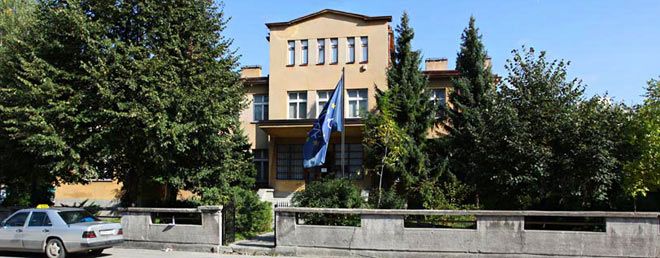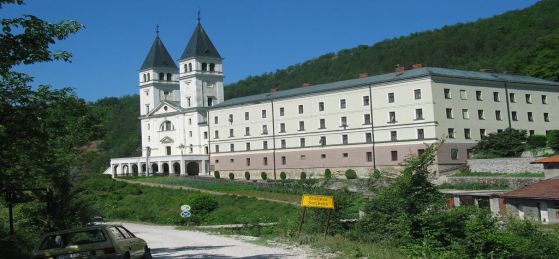WHAT TO SEE AND DO IN TRAVNIK
The Travnik Medieval Fort was one of the survivors of the 1903 fire, and the imposing structure, which for centuries defended the city from outside invaders, still dominates the horizon.
The fortress is open to guests. The walk up is lovely and the old quarter around the fortress has some very impressive traditional homes. Today, this is perhaps the best preserved fort in all of central Bosnia. Apart from being the administrative headquarters for Ottoman rule in Bosnia, Travnik is best known as anancient trading place. The markets were always filled with visitors and traders from Dubrovnik, Serbia and other Ottoman territories. Just as Mostar’s and Sarajevo’s carsija developed into craftsmen’s quarters so too did the old town of Travnik.
Travnik is the birthplace of Ivo Andric, winner of the Nobel Laureate for Literature, author of Bridge on the Drina. He also wrote Travnik Chronicles, which portrayed his view of life in Travnik during Ottoman rule. TheIvo Andric House is now a museumand a restaurant (Divan Restaurant: Zenjak bb, Travnik; tel: + 387 30 541 971). The Sahat Kula is a yet another trademark from Ottoman times. This clock tower was built in the 18th century and towers 20 meters in the town center.
You’d be ill-advised to ignore Plava Voda(Blue Waters), a large source that flows out of the base of Vlasic Mountain. There is a path all the way to the source. The water is freezing cold and wonderful for a cold drink or a refreshing splash in the summer. Near Plava Voda is theElci-Ibrahim pasina Medresa, built in a neo-Moorish style. Its construction in 1706 was due to Travnik’s growing importance within the Ottoman Empire not only as a major trade town but for Islamic Studies as well.
It’s hard to miss the Sarena Dzamija(Multi-Colored Mosque), built in 1757. With its bright colors, its unique and intricate artistic details on the outside walls and its carved wood, it is said to be among the most beautiful mosques in the Balkans – and the only one in the country that people believe stores hairs of the prophet. It has unusual flower motives painted on the outside, and it is one of only two mosques in Bosnia and Herzegovina in which the prayer room is positioned on the first floor, with the ground floor used to conduct business.
Jeni mosque is the oldest mosque in Travnik dating back to 1549. It has been reconstructed and renovated several times since its 16th century construction by dervish orders. The Loncarica and Hadzi Ali-begova mosques are also worth a peek as great examples of Ottoman architecture.
The Hadzi Ali-begovamosque is the only one in Bosnia and Herzegovina to have a sun clock-dial. This ‘suncani sat’ was apparently built in 1886 by the Smoljan brothers to assist the winemakers Basbunar. Travnik has always boasted of a rather diverse local population.
In town, there is the Catholic Church ofSt. Ivan Krstitelja, built in 1887. Just outside of Travnik in the north Lasva Valley region is the Gospina Kapela. This kapela was built by a water source thought to have healing powers and has since became a small pilgrimage site for Catholics in the region.
The Church of the Lords Sourcehas been built on the same premises. The orthodox church of Znamenitosti from 1854 is home to many icons from the 17-19th centuries.
Southeast along the Lasva River from the Sarena Dzamija is one of the few remaining old-style Bosnian mahalas (residential quarter). These old homes, built with steep roofs to counter the effects of heavy snow, are prime examples of traditional Bosnian architecture. The houses are inhabited, giving them all the characteristics of living museums.
In the middle of town is the Zavicajni Museum on Mehmedpase Kukavice 1 (tel: + 387 30 518 140). The Museum is open Monday to Friday from 7 a.m. to 4 p.m., Saturday and Sunday from 10 a.m. to 2 p.m. Admission is 1 KM. At Galerija Terra on Bosanska Street 161 (tel: 030 511 428; 061 983 003) one can find a rich collection of local paintings, many of them depicting life in Travnik.
Eight kilometers from Travnik towards the town of Vitez is the famousFranciscan Monastery of Guca Gora. Although the Franciscan church had significant difficulties during the Ottoman times many of the monasteries continued to function. The small village of Guca Gora is situated on a hilltop overlooking the Lasva Valley. The monastery, as most Franciscan monasteries in Bosnia are, is open to the public and has an interesting library collection.


